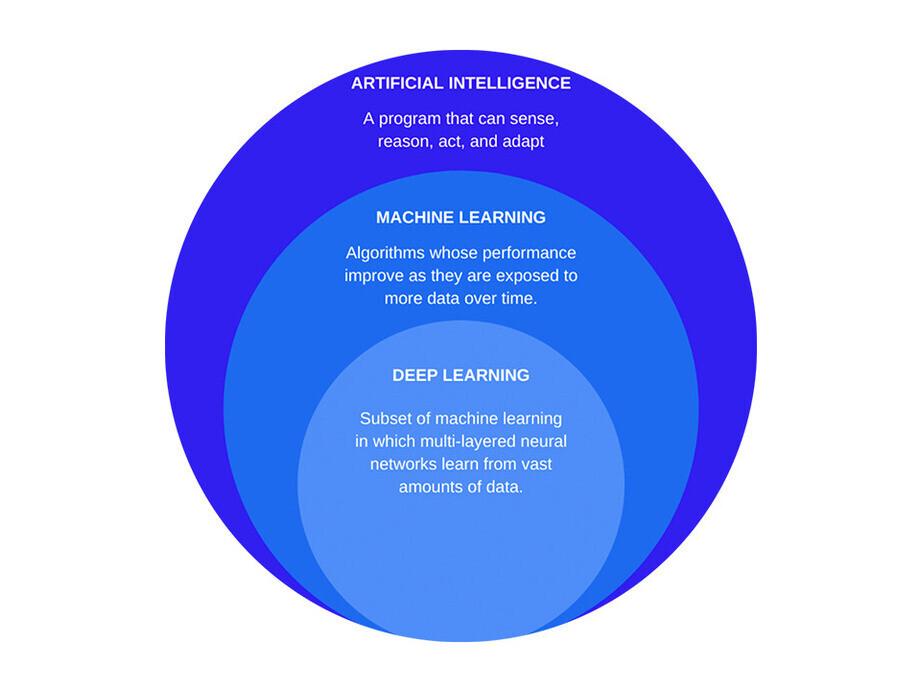Transforming Quality Engineering with AI, ML and Big Data

Hi! My name is Maksim Askirka, I work at EPAM as a Quality Engineering Manager. In this article, I would like to take a look at how the potential applications of Artificial Intelligence (AI) in conjunction with the progress of Machine Learning (ML) can lead to a change in the Quality Engineering (QE) practice.
Impact of AI on the current state of Quality Engineering, risks and threats connected with the AI integration, and some pieces of advice on how Quality Engineers can stay competitive in this changing environment – all these topics are covered in the material below. Have a good reading!
Spis treści
Intro: New horizons for Quality Engineering
„Our intelligence is what makes us human, and AI is an extension of that quality” – Yann LeCunn, Chief AI Scientist, Meta.
The QE practice is undergoing significant transformations due to the integration of AI, ML, and Big Data. These transformative technologies are reshaping how organizations approach analysis, design, development, testing, monitoring, and control, allowing them to develop more sophisticated software products that can learn from data and make predictions based on this data, optimize their processes, reduce the number of errors, scale the business more effectively, enable them to experiment, and at the same time deliver high-quality products swiftly and cost-effectively.
With the constant increase in the complexity of software systems, the volume of data, the number of integrations, and the growth of requirements – the use and implementation of AI, ML, and Big Data opens up new horizons for enhancing the efficiency of QE processes.
Let’s discuss how these cutting-edge technologies affect quality development and consider their applications and advantages.
What lies behind AI
AI is a field of computer science that aims to create intelligent machines capable of performing tasks or making decisions, similar to humans. ML is a subset of AI that involves the development of algorithms and models that allow computers to learn from data and improve their performance over time. Big Data refers to the large volume of structured and unstructured data that organizations collect and process. Big Data provides the raw material for AI and ML algorithms to analyze and derive insights from.
The connection between AI, ML, and Big Data lies in their unity and mutual reinforcement. AI and ML require large amounts of data to learn, process, and make accurate predictions, and Big Data provides the necessary fuel to train and improve algorithms.

„Asking a manager 'Are you using AI?’ in a few years from now will be like asking 'Are you using the computer?” – Jim Sterne, Director, Emeritus Digital Analytics Association
What impact does AI have on Quality Engineering?
QE design is constantly evolving and experimenting with advanced technologies in order to build a framework with the proper quality gates to achieve the goals of an organization and/or business. The spread of AI in quality design is one of the main trends today. More and more companies are wondering every day how the implementation of AI might help them move towards their goals.
QE is no longer just testing; it covers all business processes and customer service stages to ensure there are no quality violations between each stage. AI is designed to have a transformative impact on software testing and QE, revolutionizing the methods of conducting, optimizing, and analyzing testing.
Here are a few ways in which Artificial Intelligence affects or/and will affect software testing and quality development:
- AI-Driven Test Automation Tools: AI algorithms can automatically generate test cases, execute tests, create reports, and analyze results, reducing the manual effort required to perform repetitive testing tasks.
- Self-Healing Test Automation: Using AI Test Automation can analyze test results and identify the root cause of the failure. Once the root cause is identified, Artificial Intelligence can automatically generate a fix for the test scenario. This allows engineers to automate testing more efficiently since it eliminates the need for manual intervention to eliminate testing failures.
- AI-based Code Review for Quality Assurance: AI-based code validation tools can analyze code for a variety of potential defects, including security vulnerabilities, coding errors, and performance issues.
- Intelligent Identification and Generation of Test Scenarios: AI can generate test suites based on historical data, critical scenarios, and user behavior patterns, aggregating and processing information from different data sources. This leads to improved testing coverage and the identification of critical testing scenarios that could have been overlooked when creating a traditional test suite.
- Test Data Generation: By leveraging AI techniques AI can generate synthetic test data that is very similar to real-world scenarios, providing comprehensive testing without compromising data privacy or security.
- Multilingual Testing with AI: AI/ML can help with translation to other languages to ensure that the software is translated correctly and that it works in all required languages.
- AI-based Test Environment Management: AI capabilities can automate the management of test environments like provisioning and de-provisioning test environments, self-healing mechanisms, and monitoring test environments.
- Test Case and Test Execution Optimization: AI can optimize test suites by prioritizing test suites based on risk factors, code changes, and available test data history. This ensures thorough testing of critical functionality while reducing redundancy and minimizing regression time.
- Predictive Defect Analysis: AI-based models can predict potential defects and find holes by analyzing test data, code metrics, and user feedback, which will allow quality engineers to actively eliminate problems early in the development process.
- Performance Testing with AI/ML: AI can simulate real-world user behavior and traffic patterns to conduct large-scale performance testing. This allows quality engineers to identify performance bottlenecks and optimize system performance under various conditions.
- Advanced Test Reports and Analysis: AI-driven analytics can process huge amounts of test data, log files, and performance metrics, providing stakeholders with comprehensive information suitable for taking action and giving quality engineers a deeper understanding of the quality of the software, identifying trends, and facilitating data-driven decision-making.
- Continuous Testing: AI can improve the practice of continuous testing by automating the generation of test cases, test data, test execution, analyzing test results in real-time, and providing feedback for immediate action.
Intelligent Automation is one of the strategic perspectives in QE. This approach to test automation, based on the rapid introduction of new methods and technologies, requires an increased level of competence, deeper cooperation between teams of various levels, and a deep understanding of the most advanced technologies and approaches. Effective implementation of Intelligent Automation also requires analysis of current testing processes, identification of bottlenecks, and identification of areas where automation can bring maximum benefit, as well as the use of advanced tools and platforms that facilitate integration, scaling, and management of automation.
Incorporating AI, ML, and Big Data is not just a strategic move, but a necessity for organizations that want to stay ahead in QE and remain competitive in their industry.
Here are just some of the many AI-based tools available for software development and testing:
- Bard / ChatGPT / BingChat – powerful AI assistants that will help you do research, automate tasks, generate examples of artifacts, analyze results, and much more. If used correctly, you will see how much your productivity can be increased.
- GitHub Copilot – AI-powered coding assistant that enhances your coding speed and accuracy, making the process of writing code faster and more precise.
- Amazon CodeWhisperer – is powered by a large dataset of code and human feedback. This dataset allows CodeWhisperer to understand the context of your code and suggest relevant code completions. CodeWhisperer can also lint your code to help you find potential errors.
- Snyk with AI – Snyk powered by DeepCode AI is a new feature that uses AI to help you quickly and easily find and fix security vulnerabilities in your code that may not be visible to other tools, such as unit testing or static analysis tools. DeepCode AI is a tool that uses AI capabilities to analyze code and identify potential security vulnerabilities.
- Katalon – AI-driven visual testing tool designed to assist you in identifying visual defects in your UI more quickly and easily than with manual visual testing.
As AI/ML technology continues to evolve, we can expect more innovative tools designed to enhance testing’s quality and efficiency.
Risks Associated with Investing in AI-based Quality Engineering
As we can see, the potential benefits of introducing AI are huge, and yet, it is not completely clear where it will all go. Having the potential to transform many industries and improve efficiency, accuracy, and precision, AI can also be costly, biased, and lead to job displacement. It is important to take into account both the advantages and disadvantages of AI and ensure that it is used ethically and responsibly.
Investments in high-quality engineering based on AI can bring many benefits, but there are also risks associated with its implementation:
- Data Quality in AI Training: One of the main risks now is the quality of the data used to train AI models. When using low-quality data or incomplete/biased data sets, this can lead to inaccurate or biased AI results, which can have a significantly negative impact on the organization.
- Cost and Expertise in AI Development: The development of AI is expensive because it requires powerful hardware to work, and another problem is the need for specialized expertise to develop and maintain testing tools based on AI.
- Data Privacy and Responsibility in AI Usage: It was noticed that the systems are imperfect and there are many leaks of personal and confidential data. Therefore, the use of these systems requires increased organization and responsibility.
- Regulation of AI: AI manipulation is gaining momentum, and at the same time, some countries ban the use of this technology.
- Versatility and Integration Challenges of AI Tools: Tools based on AI are currently good for solving a specific task, but they lack versatility, given their limited application scenarios. Therefore, choosing the right tool can take a long time.
- Long Learning Curve: The integration of AI into the testing process can be difficult and often requires special technical knowledge, and testing coverage may be incomplete.
- Impact of AI on the Workforce: AI can lead to job displacement as machines take on tasks that were previously performed by humans.
One of the currently noticeable consequences is that the output from AI systems can sometimes appear to be accurate, yet upon closer examination, it may prove to be nonsensical or unreliable. Lately, there has been a growing amount of meaningless information floating around, and it has become a real concern. That is why many researchers and developers are taking a step back from the fast-paced AI development and shifting their focus to enhancing the quality of AI systems and implementing effective regulatory measures. By doing so, we can work towards making AI more reliable and trustworthy.
Organizations should carefully weigh the associated risks of Artificial Intelligence when testing software when choosing an approach and tools to testing and ensure its ethical and responsible use.
Competitiveness as a Quality Engineer
As businesses and organizations increasingly rely on data-driven decision-making, the need for professionals who can design, develop, integrate, implement, and use AI and ML systems is growing rapidly. To remain competitive as a Quality Engineer now and in the future, it’s important to start building your skills now.
Here are a few areas I recommend focusing on:
- Continuous Learning: Stay updated with the latest trends, tools, and techniques in testing and quality engineering. Embrace new methodologies and technologies to enhance your skill set.
- Test Automation Expertise: Develop proficiency in test automation frameworks, tools, and scripting languages. Automation skills are in high demand to improve the efficiency and speed of testing processes.
- Data Privacy and Security Testing: As security concerns increase, Quality Engineers need to focus on data privacy and security testing to safeguard sensitive information from breaches and vulnerabilities using best practices.
- AI and ML: Acquire knowledge of AI and ML concepts, as they are increasingly being integrated into testing processes. Understand how these technologies can be leveraged.
- Collaboration and Communication: Enhance your ability to work closely with developers, product owners, and other stakeholders. Strong communication skills and the ability to collaborate effectively are crucial for successful quality engineering.
Already we see how new job titles tied to AI emerging in the IT industry, and of course, there are and will be changes and transformations in testing. We are already seeing demands for AI and ML specialists, as well as specialists capable of processing large amounts of data and doing analysis and forecasting on the basis of it.
Specialists such as AI Testing Analysts, AI/ML Quality Engineers, Test Automation Engineers with AI integration, and Cloud-based Testing Engineers with AI/ML integration are already on the market and the demand for such specialists will only grow. It is important to note that job titles may vary from organization to organization, and the specific responsibilities and requirements associated with these titles may vary.
By constantly researching and being open to change, you will be able to stay ahead of the curve and become a competitive Quality Engineer in the upcoming era of AI.
What do you think about the influence of these latest tech breakthroughs on QE? You can share your opinion in the comments below. Also contact me on LinkedIn if you have any questions.
This article was originally published on wearecommunity.io. The article’s main photo is from envato.com.
Podobne artykuły

How to be a better software developer. Four things no one ever mentioned

EPAM Team in the Final for NASAs MarsXR2 Challenge. Interview with Nataliia Savchenko

AI-Accelerated Innovation: The Next Evolution of Software Engineering

